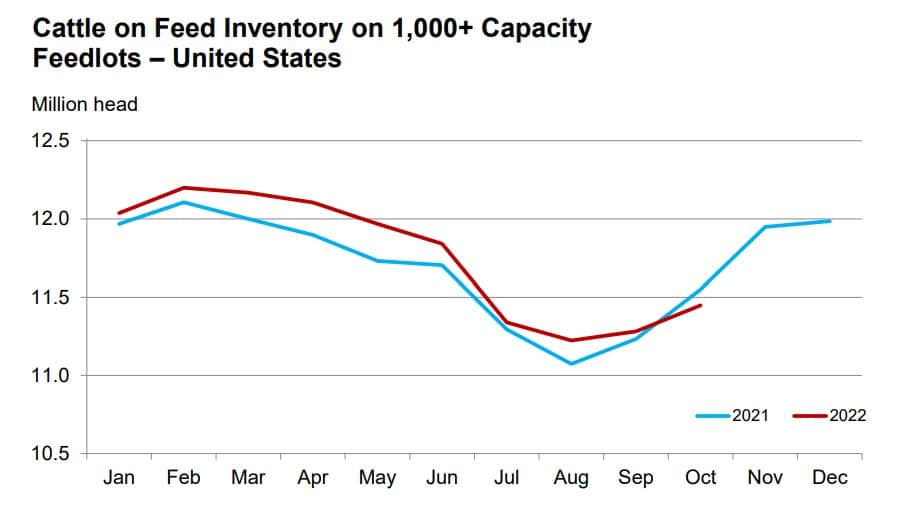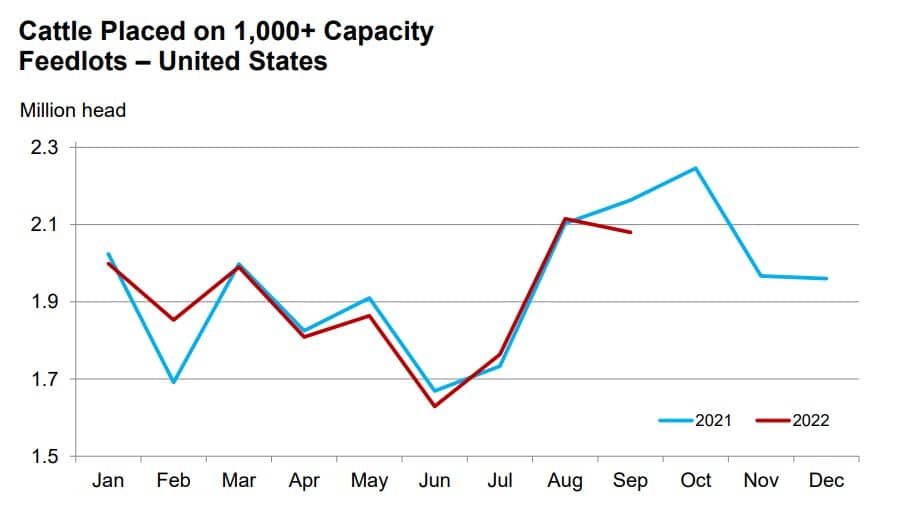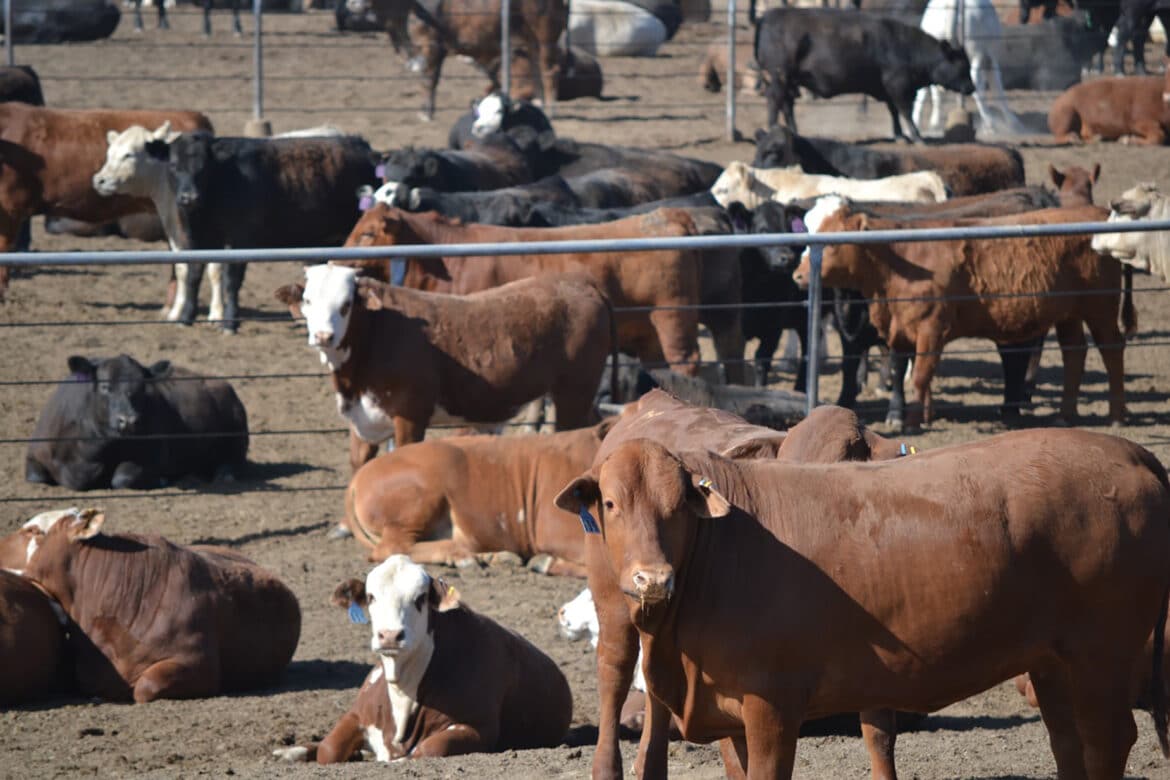The latest USDA Cattle on Feed report pegged the October 1 cattle on feed inventory at 11.449 million head, down 0.9 percent year over year. This is the first year over year decrease in the monthly on-feed inventory since December 2021. Among the largest feedlot states, on-feed totals in Texas and Nebraska remain higher year over year, up 3.3 and 3.8 percent respectively while feedlot totals are down in Kansas, 6.7 percent lower year over year and Colorado, down 5.3 percent from last year.
The quarterly breakdown of steers and heifers for October 1 showed that the number of steers on feed was down 2.3 percent from last year while the number of heifers was up 1.4 percent year over year. The number of heifers on feed indicates continued liquidation in the cattle herd with heifers on feed representing 39.7 percent of total feedlot inventories, the highest heifer on feed percentage in 21 years since October 2001. The number of heifers on feed in Texas on October 1 was up 13.1 percent year over year, giving Texas an unusually large share of total heifers on feed and the highest Texas total for heifers on feed since 2001. This is consistent with the severe drought conditions in the southern plains this year.

September feedlot placements were 96.2 percent of last year and the 3.8 percent year over year decrease was the largest monthly placement decrease since July 2021. Placements of cattle from 600 – 900 pounds were down 7.6 percent year over year with placements under 600 pounds up 2.3 percent year over year and placements over 900 pounds up 2.7 percent year over year. September feedlot placements were lower in Texas (down 8.9 percent year over year), Kansas, down 11.9 percent and Colorado, down 4.5 percent from last year. However, placements in Nebraska were up 8.3 percent year over year in September.

Feedlot marketings in September were up 4.0 percent year over year with increased marketings in Nebraska, up 10.3 percent, and Kansas, up 4.6 percent and Colorado unchanged from last year. Marketings from Texas feedlots were down 1.2 percent year over year in September. Total feedlot marketings in the past six months have averaged 1.4 percent higher year over year.
Fed cattle slaughter in 2022 has averaged 0.9 percent higher year over year, with steer slaughter down 1.6 percent and heifer slaughter up 5.0 percent compared to last year. Labor issues in the beef packing industry appear to have improved as average daily (Monday-Friday) fed slaughter totals have increased 3.5 percent year over year. Daily fed slaughter reached 100,212 head on Tuesday, May 17, 2022, topping 100,000 head for the first time since December 2013. Daily fed slaughter has exceeded 100,000 head twelve times this year. Average Saturday fed slaughter is down 24.8 percent year over year in 2022. This another indication that labor issues have improved as packers have relied less on Saturday slaughter despite increased total slaughter.
Drought has forced more cattle into feedlots in 2022, keeping placements higher and maintaining larger feedlot inventories than otherwise would have been the case. The 12-month moving average of feedlot inventories decreased this month for the first time since October 2021. The latest cattle on feed report suggests that these temporary impacts may have run their course which will lead to decreasing feedlot totals and reduced marketings going forward.
###
Derrel Peel – Oklahoma State Extension


